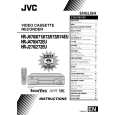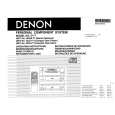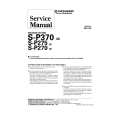|
|
|
Productos
|
|
Información
|
|
Destacado
|
|
|
 |
|
|
No hay comentarios de productos.
MS2000/MS2000R EasyStart
(Located to the left of the LCD screen) as you edit - it will light when you reach the control�s original position. The ORIGINAL VALUE LED is also helpful when you want to learn just how a Program was created.
Check out The Arpeggiator
1. 2. 3. Press [EXIT] to return to Program Play mode and select Program A01: Stab Saw. Turn the Arpeggiator on by pressing the [ON/OFF] key in the ARPEGGIATOR section. Play a chord on the keyboard and notice the chord holds. When the [LATCH] key is on (lit), the Arpeggiator will continue playing after you release you hand from the keyboard. Each time you press the [LATCH] key, the setting will alternate between on and off. Press the [RANGE] key. The pitch range is displayed in the lower line of the LCD screen. Each time you press the [RANGE] key, the pitch will change between 1-4 octaves. Press the [TYPE] key. The arpeggio type is now displayed on the lower line of the LCD screen. Each time you press the [TYPE] key, the arpeggio type will change. (There are six types) Press the [EXIT] key. Play a chord and rotate the GATE knob. Rotating the knob to the right will lengthen the notes, and rotating it toward the left will shorten them. Rotate the TEMPO knob while playing a chord. Rotating the knob to the right will speed up the tempo, and rotating to the left will slow it down. The tempo is displayed in the lower right of the LCD screen. You have officially Arpeggiated!
4. 5. 6. 7.
!
For more detailed information on the Arpeggiator (Including �Key Sync,� �Resolution,� and �Swing� settings or Synchronizing to MIDI clock) see the Owner�s Manual pages 27, 45, 54.
The Mod Sequencer: Adding motion to a sound
The Mod (Modulation) Sequencer is a step sequencer (up to 16 steps- 3 �tracks� per timbre, 6 per program) that lets you apply timevariant change to various sound parameters in a way similar to analog synthesizers of the past. You can use the 16 knobs on the front panel to set the value of each step or record changes in realtime (Motion Record function). Here we will briefly explore both. 1. 2. 3. Press [EXIT] to return to Program Play mode and select Program A01: Stab Saw. Press the SEQ EDIT [SELECT] key (Located above the BANK buttons) so that the SEQ 1 LED is lit. On the lower line of the LCD screen you will see Pitch is the parameter assigned to SEQ 1. The LCD screen shows SEQ1:Pitch Press the [EDIT] key (Located under the LCD screen and PAGE keys) then rotate the first of the sixteen knobs (Located beside the SEQ EDIT LEDs) until the LCD screen shows Step [01]: +12 on the lower line Press the MOD SEQUENCE [ON/OFF] key so it is on (lit) Now play and hold a note on the keyboard. Note how the first step of sequence 1 is an octave above the note played. The SELECT keys 1-16 light up as they step through the sequence. Oooh, pretty lights! While holding a note, rotate several of the other sixteen knobs and change the pitch of other steps then rotate the TEMPO knob (Located in the ARPEGGIATOR section) to adjust the tempo.
3
|
|
 |
> |
|





